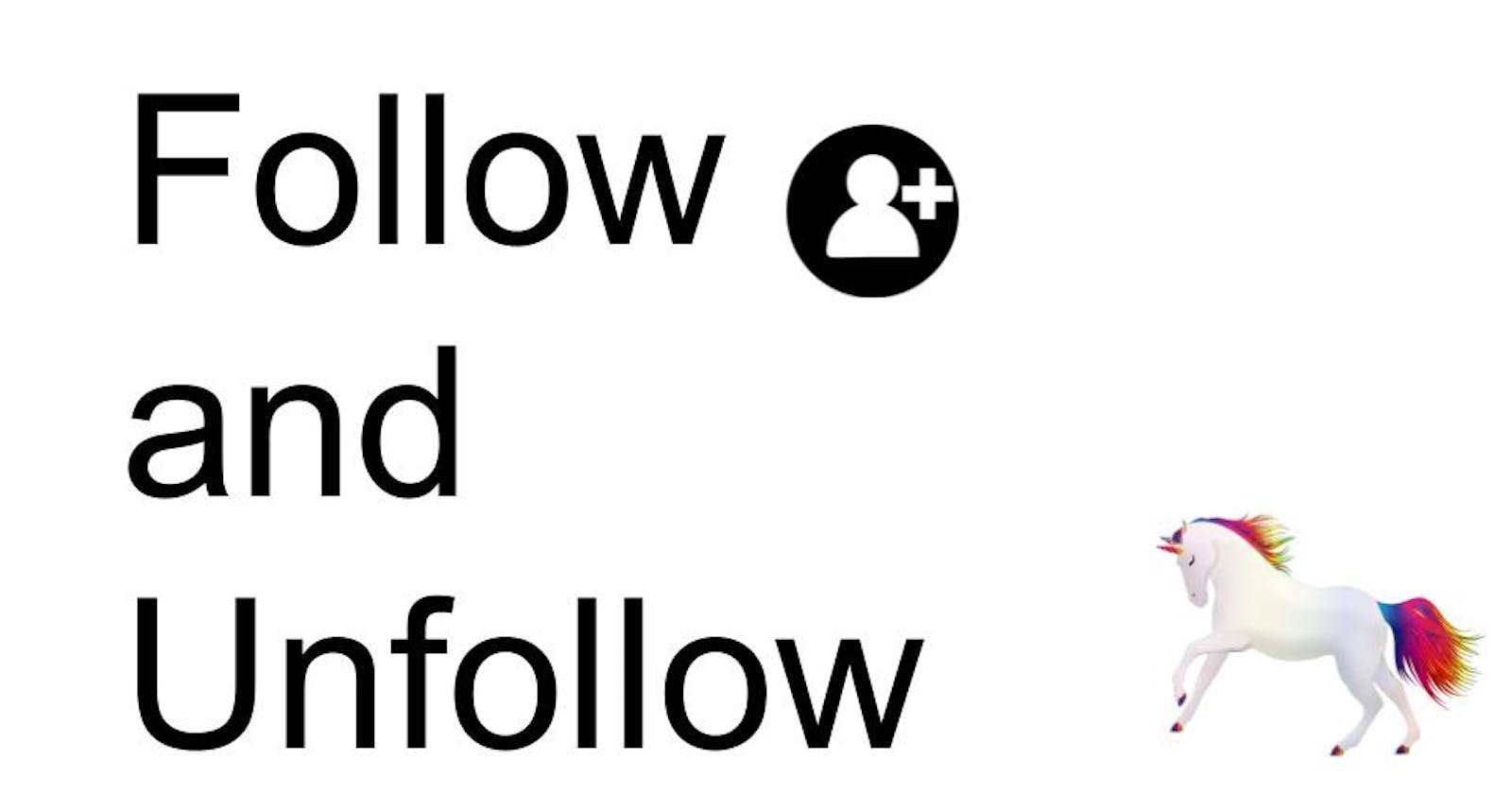Social Media giants like Instagram, Twitter, Facebook, and Github have one thing in common, that is it follow/unfollow feature. which allows the user to follow each other.
Here, in this post, we have tried to mimic this feature.
*Basic knowledge of Django is required
Modules required :
- Django :
pip install Django
Basic setup :
Command to make a project - here, the name of the project is named as "blog"
django-admin startproject blogin blog folder create an app - here, the name of the app is named as "author"
python manage.py startapp author
code
- After creating the author app, open the models.py file in the author
from django.db import models
from django.contrib.auth.models import AbstractUser
class User(AbstractUser):
following = models.ManyToManyField(
"self", blank=True, related_name="followers", symmetrical=False
)
bio = models.TextField(max_length=200, blank=True, default="Bio")
website = models.URLField(max_length=200, blank=True)
def __str__(self):
return f"{self.username} Profile"
Here, the ManyToMany field will help us create a followings field as a user can follow many other users and many users can follow him. Docs on ManyTOManyField
- After creating models and running migrations, we need to work on views.py
from django.shortcuts import render
from django.http import HttpResponseRedirect
from django.urls import reverse
from author.models import User
def profile(request, username):
userProfile = User.objects.get(username=username)
data = {
"author": userProfile,
}
return render(request, "author/profile.html", data)
def followToggle(request, author):
authorObj = User.objects.get(username=author)
currentUserObj = User.objects.get(username=request.user.username)
following = authorObj.following.all()
if author != currentUserObj.username:
if currentUserObj in following:
authorObj.following.remove(currentUserObj.id)
else:
authorObj.following.add(currentUserObj.id)
return HttpResponseRedirect(reverse(profile, args=[authorObj.username]))
we have to functions here:
profile() - this function handle user profile by accepting username as an argument
followToggle() - this function handle follow/unfollow system for a user. This function takes a username as an argument, which our current user wants to follow/unfollow.
- Now time to work on urls.py to connect views
from django.urls import path
from author import views
urlpatterns = [
path("profile/<str:username>/", views.profile, name="profile"),
path("followToggle/<str:author>/",views.followToggle, name="followToggle")
]
- Create a templates folder inside the templates folder, create an author/profile.html template.
*I have use bootstrap for my project. so, please ignore classes
{% extends "base.html" %}
{% load static %}
{% block header %}
{% endblock header %}
{% block content %}
<div class="pt-5 mt-5 pb-5 mb-5">
<div class="container">
<div class="main-body">
<div class="row gutters-sm">
<div class="col-md-4 mb-3">
<div class="card">
<div class="card-body">
<div class="d-flex flex-column align-items-center text-center">
<img src="{{ author.image.url }}" alt="{{ author.username }}" class="rounded-circle" width="150" />
<div class="mt-3">
<h4>{{ author.username }}</h4>
<div class="row">
<b> following : </b>
<p class="text-muted"> {{ author.following.count }} </p>
<b> followers : </b>
<p class="text-muted"> {{ author.followers.count }} </p>
</div>
<h6 class="text-muted font-size-sm">
{{ author.bio }}
</h6>
{% if user.is_authenticated %}
{% if user in author.following.all %}
<a href="{% url 'followToggle' author=author.username %}" class="btn btn-primary">Unfollow</a>
{% else %}
<a href="{% url 'followToggle' author=author.username %}" class="btn btn-primary"> Follow </a>
{% endif %}
<button class="btn btn-outline-primary">Message</button>
{% else %}
<p class="text-muted"> please, login to follow </p>
{% endif %}
</div>
</div>
</div>
</div>
<div class="card mt-3">
<ul class="list-group list-group-flush">
{% if author.website %}
<li class="list-group-item d-flex justify-content-between align-items-center flex-wrap">
<h6 class="mb-0">
<svg xmlns="http://www.w3.org/2000/svg" width="24" height="24" viewBox="0 0 24 24" fill="none"
stroke="currentColor" stroke-width="2" stroke-linecap="round" stroke-linejoin="round"
class="feather feather-globe mr-2 icon-inline">
<circle cx="12" cy="12" r="10"></circle>
<line x1="2" y1="12" x2="22" y2="12"></line>
<path
d="M12 2a15.3 15.3 0 0 1 4 10 15.3 15.3 0 0 1-4 10 15.3 15.3 0 0 1-4-10 15.3 15.3 0 0 1 4-10z">
</path>
</svg>Website
</h6>
<span class="text-secondary">{{ author.website }}</span>
</li>
{% endif %}
</div>
</div>
</div>
</div>
</div>
</div>
{% endblock content %}
this is the profile page for the author we want to follow/unfollow, we get this page by passing "username" to profile views
here,
- {{ author.following.count }}: this tag represents the count of users following the current user
- {{ author.followers.count }}: this tag represents the count of users followed by the current user, this type of relationship tag is called reverse or backward relationship docs
To follow/unfollow this user we are using {% url 'followToggle' author=author.username %} this URL tag. follow and unfollow text on the button is represented by looking if the user exits in the author following list
That's it. hope, you like it.

